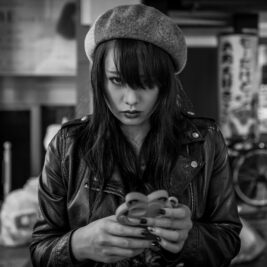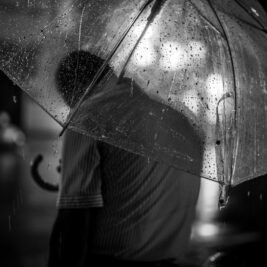Photo Equipment
Macro equipment doesn’t have to expensive. There are several options to achieve a large reproduction ratio so subjects are captured in (nearly) life size or even greater. Smaller sensors even have advantages compared to full frame sensors for example because the depth of field is bigger, something that is very important when it comes to macro photography. With a smaller sensor you don’t need to use a very small aperture like with a full frame sensor. Since you need lots of light and a fast shutter speed to prevent motion blur a flash is an accessory that you need in most cases, ideally in combination with a diffuser so the light is not that harsh. If you don’t have a macro lens it’s possible to use macro conversion lenses that you attach to the front of your lens or extension tubes that you screw between the camera and the lens. It’s even possible to attach a lens inverted with an adapter to achieve a very large reproduction ratio.
All of these possibilities provide an inexpensive start into the world of macro photography. Keep in mind though, that there are some negative aspects when going this way instead of buying a dedicated macro lens. Besides the (compared to a macro lens) not perfect sharpness you lose some light when using extension tubes and you can only focus in a certain range so you sacrify flexibility. Autofocus is often not possible at all (depending on the extension tubes, some have electrical contacts so autofocus is possible) but that might not be an issue since you might want to focus manually anyway. The best option is a macro lens, you can focus to infinity and use the lens for other purposes, too. The sharpness is very good in most cases because a marco lens has been build to deliver exactly that.
My first macro lens was the Sony SEL30M35, used on an E-Mount camera like the A6000. Due to the short focal length I had to be 2cm away (calculated from the front lens) from the subject to get the biggest magnification ratio – not very useful when you want to capture a photo of an insect. On the other hand, the on-camera flash and a small diffuser I built myself was enough to lit the subjects. After I decided to use Micro Four Thirds cameras I bought the M.Zuiko 60mm macro lens, using it most times on the Olympus OM-D E-M1. With this lens I have a focal length of 120mm and the minimum working distance from the front of the lens is about 10cm, much more useful so I don’t scare insects easily. The build-in stabilizer of the camera helps focussing and prevents blur. Talking about focussing: Most macro photographers don’t use autofocus, it’s all manual. I had good results using autofocus so try what works best for you. There are lots of macro photography tutorials available online and I wouldn’t tell you something new – so I will now start to show you some photos ;).
Insects
The first thing that comes to most people’s minds when it comes to macro photography are probably insects. It’s quite fascinating to magnify these creatures and to see how they look in details, it’s even scary ;). Keep in mind that you need a lot of frustration tolerance because in most cases more that 90 % of the photos go straight to the trash can. Motion blur and wrong focussing make lots of photos unusable. A flash helps with the motion blur and it needs some training to achieve good macro photos of insects. Here are some examples from my portfolio:
Other animals
Other animals are also nice subjects for macro photography. They are often much bigger than insects so certain details like eyes or cat paws can be good photo subjects:
Plants
Besides animals, plants are also good subjects for macro photography. Plant details can look beautiful and especially after rain it’s possible to achieve some good results. Let’s see some examples:
Details from everyday life
You don’t need to capture animals of plants all the time. Macro photography has the advantage that you can find interesting subjects at every place – you don’t even need to leave the house at all:
So if you lack inspiration, your city bores you and your next vacation is far away (like in my case), macro photography can be something to kickstart your creativity – at least it worked for me while writing this article. I will go out on the next weekend and use the macro lens again :). Do you have some experience / advice regarding macro photography? Please write it down in the comment section below!















































